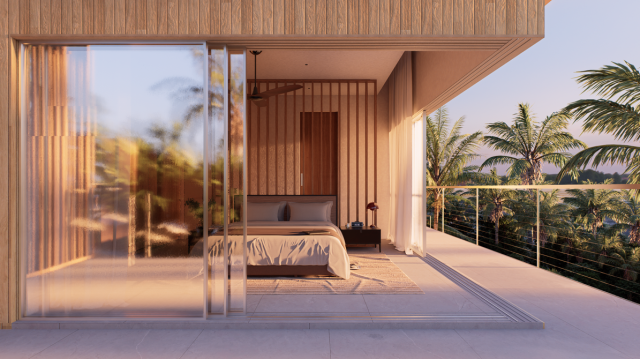
Why 30 Bedrooms Might Be the Magic Number for Hospitality Development
- 01 October, 2025
When it comes to hospitality projects, bigger isn’t always better. In fact, 30 bedrooms often hits a sweet spot — the “magic number” where developments make financial, operational, and design sense.
Of course, it’s not just a hard 30. Resorts between 15 and 45 rooms are proving to be some of the most resilient and rewarding developments in today’s market. Here’s why.
Lower Risk, Quicker Turnaround
Unlike 100+ key hotels, smaller resorts come with lower exposure and can often move faster through planning. In some cases, an Outline Development Permission (ODP) in Turks and Caicos isn’t even required, trimming months off the timeline.
Smaller projects also tend to be built on smaller land parcels, which are often easier to acquire. These sites are typically simpler transactions — straightforward owner-to-owner deals rather than complex multi-party negotiations. That simplicity at the land stage sets the tone for a faster, cleaner path to development.
And because of their scale, these projects can often be developed without multiple financial partners, reducing complications and giving the lead investor far more control.
Perfectly Aligned with Guest Demand
Luxury hospitality is evolving. More and more, guests are seeking unique, intimate, and characterful stays rather than monolithic branded hotels.
Smaller projects allow developers and their design teams to stay agile and current — adapting design language, amenities, and experiences quickly to meet changing expectations. And when it comes time for refurbishment, renovating 30 rooms is far less daunting (and costly) than a 100-key overhaul.
The Amenity Threshold
Below 15 rooms, it’s difficult to justify non-revenue generating spaces like wellness facilities, games rooms, or club lounges. But at around 30 keys, these value-adding amenities become viable — boosting guest experience without sinking the budget.
At the same time, you can explore modular construction routes — which become increasingly complex as projects scale larger.
Simplified but High-Quality Delivery
We’re currently working on two projects in this 15–45 room range for different investors. What both have in common is this: with the right architect, there’s no need to bring in layers of additional consultants.
A capable design team can handle architecture, interiors, and lighting seamlessly — and even guide the brand requirements, which are far less onerous at this scale. The result? High-quality delivery without unnecessary overhead, no coordination issue.
The Takeaway for Developers
For small to medium-sized developers, 15–45 room resorts present a sweet spot of opportunity:
- Quicker planning pathways
- Lower financial exposure
- Easier refurbishment cycles
- Justifiable amenities
- Smaller, simpler sites and transactions
- Aligned with guest demand for unique, luxury stays
Why 30 bedrooms might be the magic number for hospitality development? When considering hospitality options, don’t overlook this “magic middle ground.” With the right team, it’s not just manageable — it’s a smart move.
If this was helpful…
✍️ Follow @dune.design.tci for more tips!
Posted in: Advice
Tagged with: #Hospitality #Turks and Caicos resort architecture